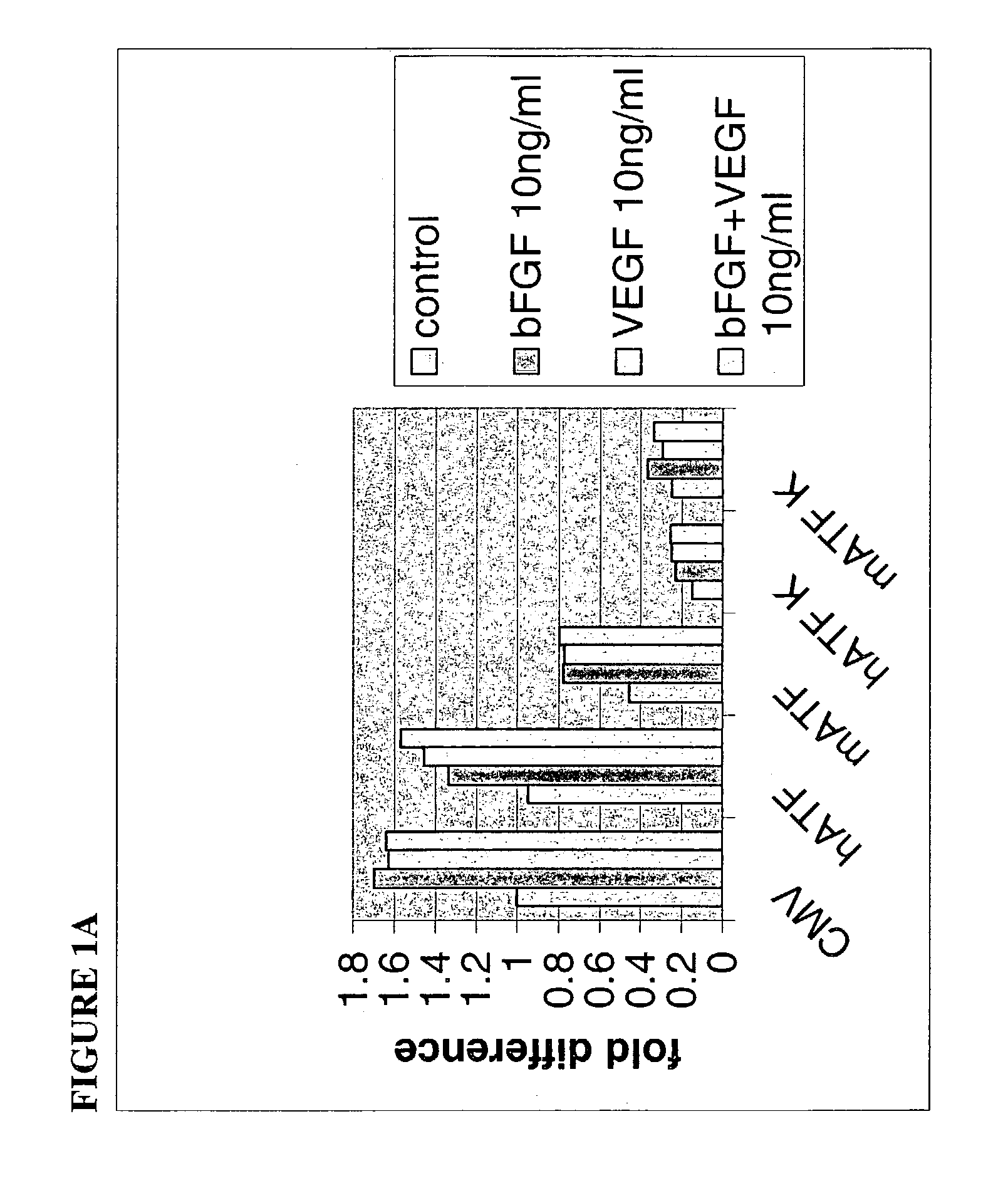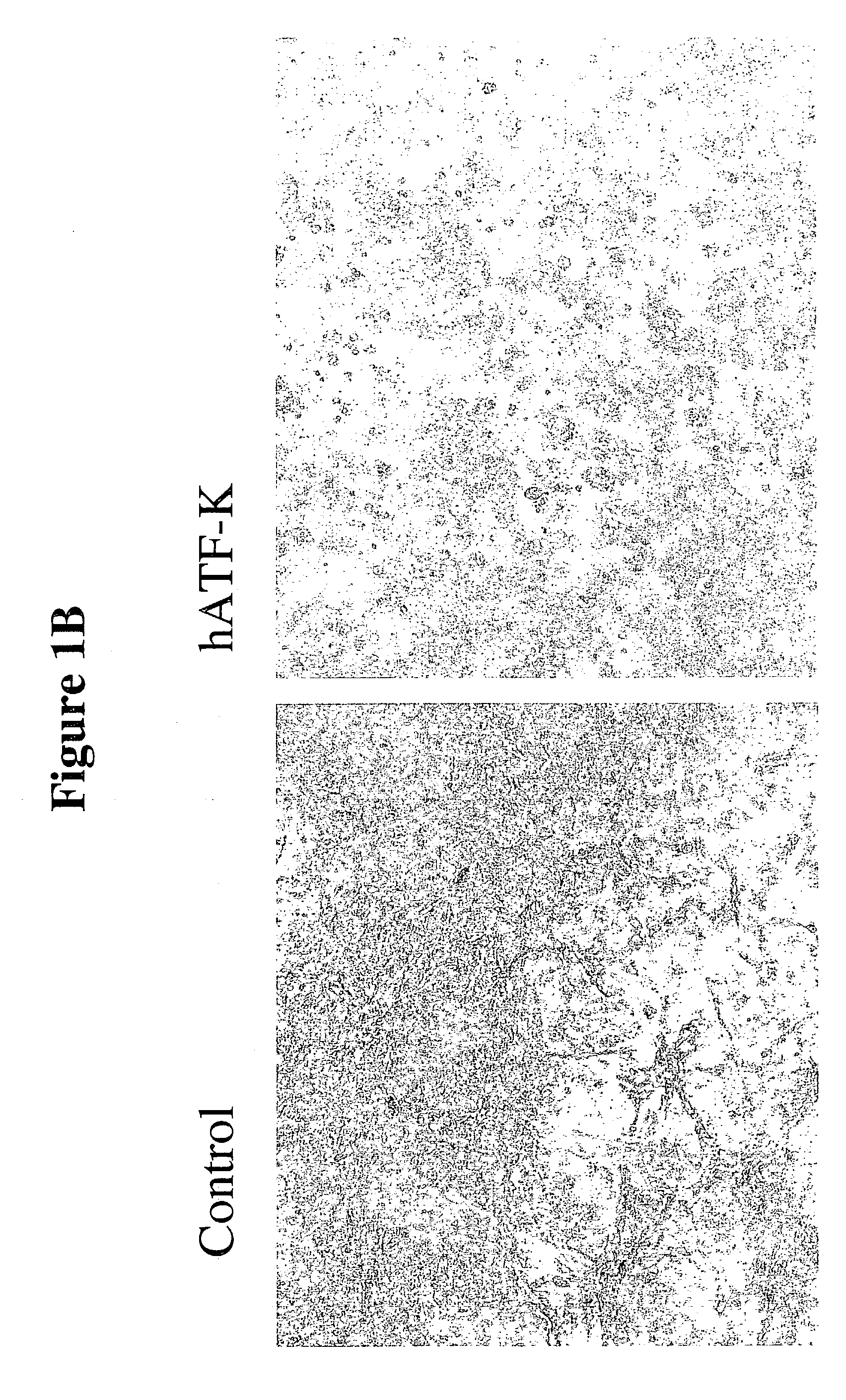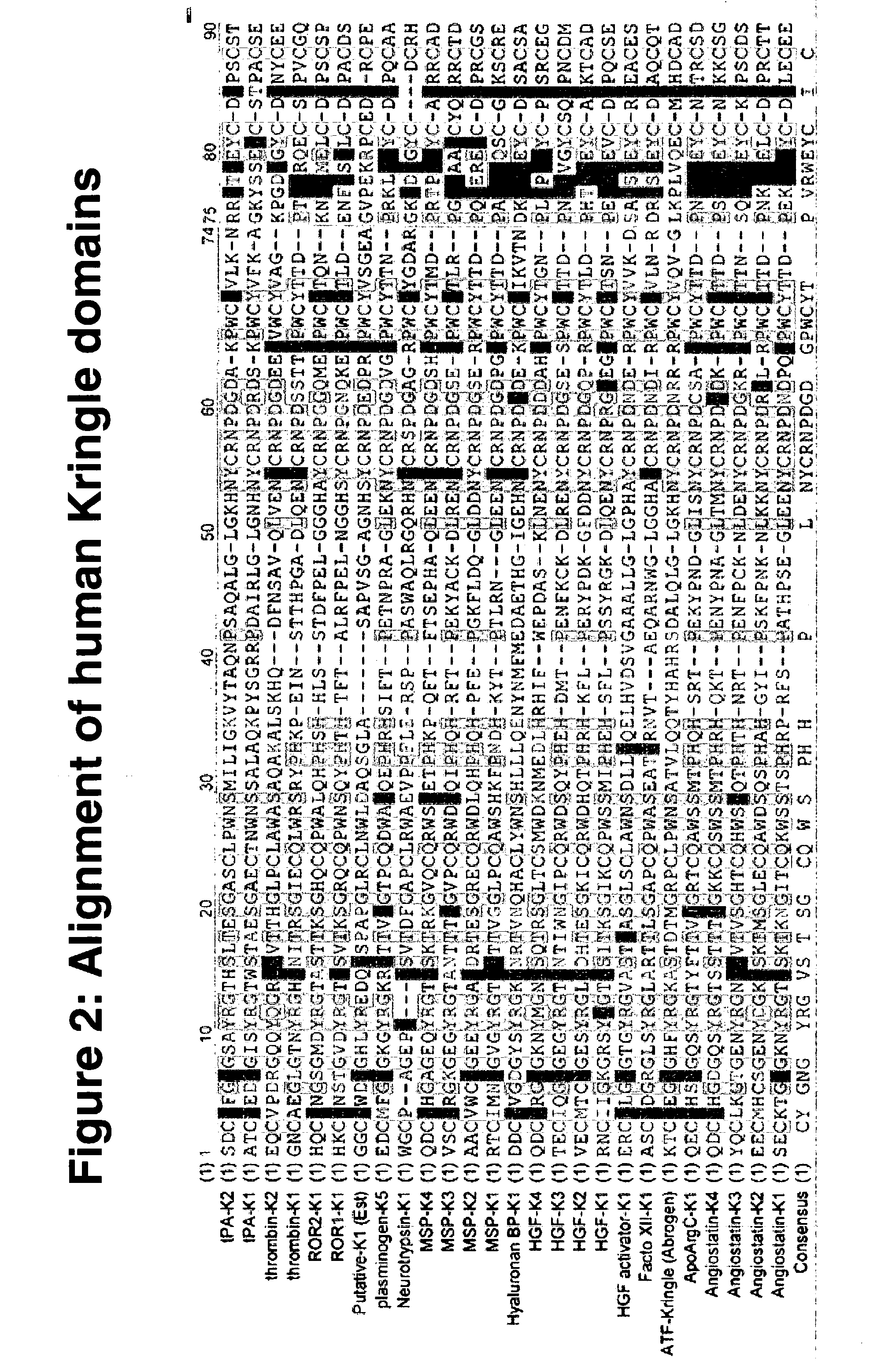Kringle polypeptides and methods for using them to inhibit angiogenesis
a polypeptide and angiogenesis technology, applied in the field of kringle polypeptides and methods for using them to inhibit angiogenesis, can solve the problems of retinal tissue, shortening the time reducing vision or even blindness, so as to increase the solubility of recombinant abrogen peptides, improve the effect of recombinant abrogen peptide solubility and easy recovery
- Summary
- Abstract
- Description
- Claims
- Application Information
AI Technical Summary
Benefits of technology
Problems solved by technology
Method used
Image
Examples
example 1
Cloning and Manipulating Nucleic Acids
[0137] The primary nucleotide and polypeptide sequence listings corresponding to the human kringle angiogenic inhibitors or abrogens according to the present invention are shown below.
1 SEQ ID NO.:1: Amino acid sequence of the kringle domain of the factor XII ASCYDGRGLSYRGLARTTLSGAPCQPWASEATYRNVTAEQARNWGLGGHAFCRN-PDNDIRPWCFVLNRD RLSWEYCDLAQCQT SEQ ID NO.:2: Amino acid sequence of the kringle domain of the hepatocyte growth FACTOR ACTIVATOR ERCFLGNGTGYRGVASTSASGLSCLAWNSDLLYQELHVDSVG-AAALLGLGPHAYCRNPDNDERPWCYVV KDSALSWEYCRLEACES SEQ ID NO.:3: Amino acid sequence of the kringle domain of the hyaluronan binding protein DDCYVGDGYSYRGKMNRTVNQHACLYWNSHLL-LQENYNMFMEDAETHGIGEHNFCRNPDADEKPWCFIK VTNDKVKWEYCDVSACSA SEQ ID NO.:4: Amino acid sequence of the kringle domain of the neurotrypsin WGCPAGEPWVSVTDFGAPCLRWAEVPPFLERSPPASWAQLRGQRHNFCR-SPDGAGRPWCFYGDARGKVD WGYCDCRH SEQ ID NO.:5: Amino acid sequence of the kringle domain of the retinoic acid-related orpha...
example 2
Proliferation Analysis of Transduced HUVEC Using Alamar Blue.
[0146] A number of different assays for analyzing cell proliferation, tubule formation, cell migration, endothelial cell growth, and tumor metastasis exist. Some of them are described in the references cited.
[0147] Human umbilical vein endothelial cells (HUVEC: Clonetics, San Diego) are seeded at 5.times.10.sup.5 cells / well of 6-well-plate in EGM-2 medium. The cells are incubated overnight at 37.degree. C., 5% CO.sub.2. Endothelial Cell Basal Medium (EBM) and Endothelial Cell Growth Medium (EGM) are available (Clonetics, San Diego). The medium is aspirated off and 500 .mu.l of ECM medium containing 100 IT / cell viruses put over cells. The cells are incubated at 37.degree. C. for 2 hours, then aspirated and 1.5 ml EGM-2 medium is added. The cells are again incubate overnight at 37.degree. C.
[0148] The cells are trypsinized, counted, and seeded at 2000cell / well of 96-well-plate in EGM-2 medium. The cells are incubated at 37.d...
example 3
Assay of Transduced HUVEC Embedded in Fibrin gel
[0150] In an assay that distinguishes the abrogen activity from angiostatin, human umbilical vein endothelial cells (HUVEC: Clonetics, San Diego) are seeded (passage 3, growing in EGM-2 medium) at 5.times.10.sup.5 cells / well of 6-well-plate in EGM-2 medium. The embedded cell assay also or alternatively provides data concerning the invasiveness of the endothelial cells in response to certain treatments. Endothelial cell tubule formation induced by pro-angiogenic factors such as FGF and VEGF, a characteristic measured by this assay, can be directly correlated to angiogenesis. The abrogen activity inhibits or reduces angiogenesis by inhibiting tubule formation. The use of virally transduced HUVEC can provide very detailed information as to the effects that a selected abrogen polypeptide or derivative has on primary cell types. The potential anti-angiogenic agents are introduced by transduction of the cells using a recombinant human adenov...
PUM
| Property | Measurement | Unit |
|---|---|---|
| volume | aaaaa | aaaaa |
| volume | aaaaa | aaaaa |
| volume | aaaaa | aaaaa |
Abstract
Description
Claims
Application Information
 Login to View More
Login to View More - R&D
- Intellectual Property
- Life Sciences
- Materials
- Tech Scout
- Unparalleled Data Quality
- Higher Quality Content
- 60% Fewer Hallucinations
Browse by: Latest US Patents, China's latest patents, Technical Efficacy Thesaurus, Application Domain, Technology Topic, Popular Technical Reports.
© 2025 PatSnap. All rights reserved.Legal|Privacy policy|Modern Slavery Act Transparency Statement|Sitemap|About US| Contact US: help@patsnap.com



